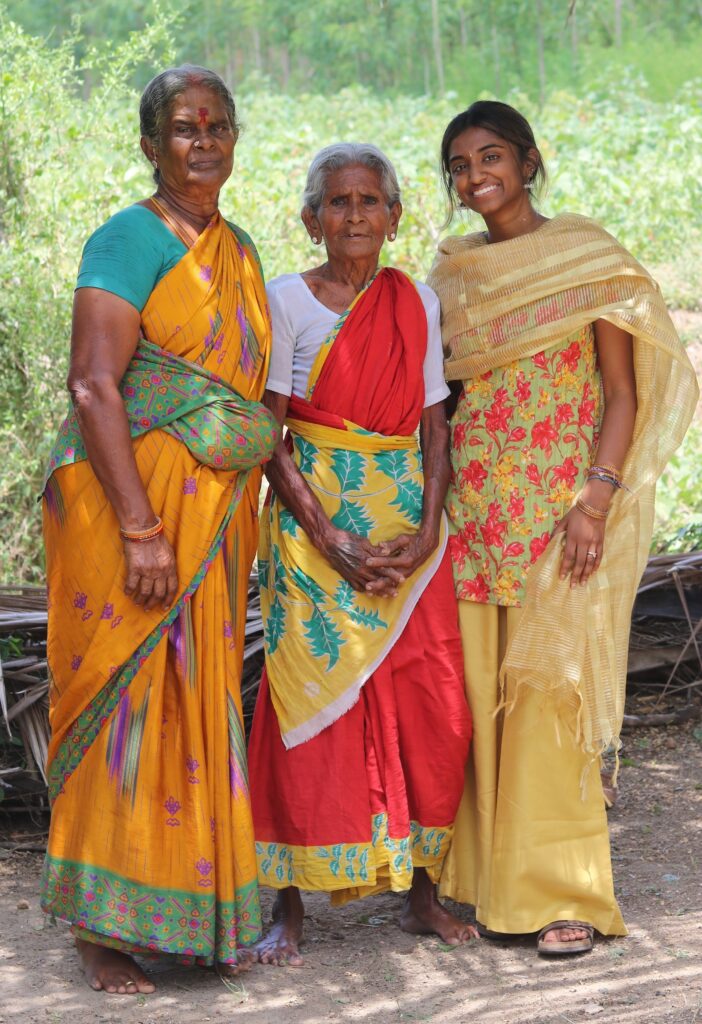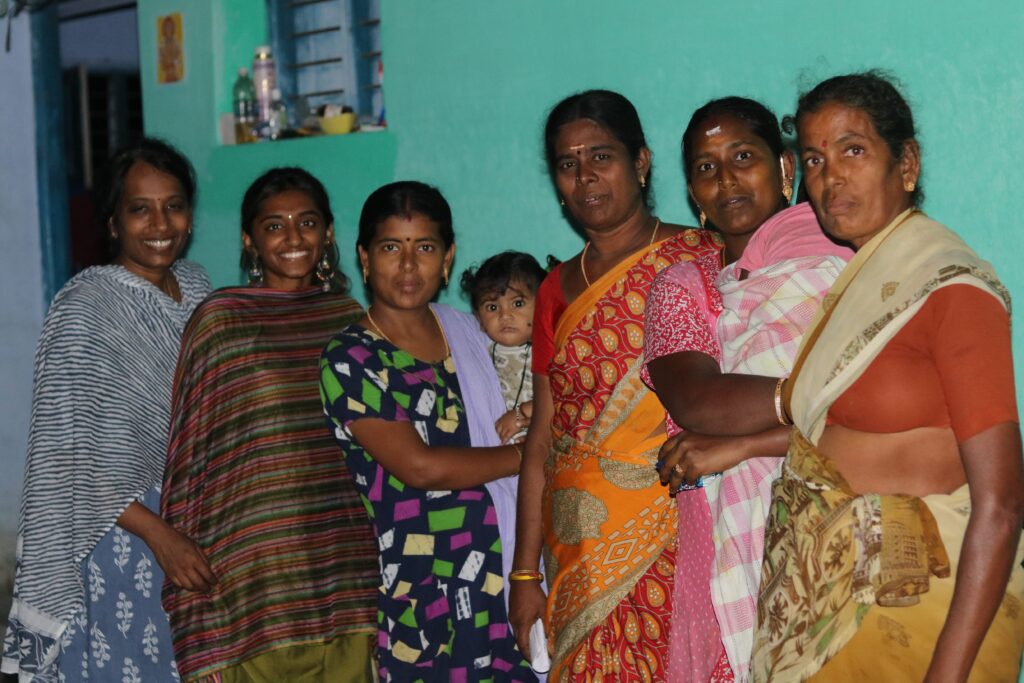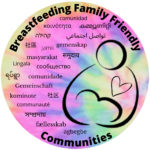A Traditional Indian Remedy for Lactation
As an undergraduate student studying in a self-designed major titled, “Global Women’s Health in Asia: Culture, History, and Power,” I chose to center my senior thesis on my origins in the rural villages of Tamil Nadu, India. It was there in Lakshmipuram, my family’s tiny village that cannot even be Googled, that I met and interviewed many women who shared personal stories of their pregnancy, delivery, and postpartum journeys.



An unanticipated result of these interviews was the vast list of maternal herbal remedies I amassed. Specifically for breastfeeding, a statistically significant amount of women recalled eating white garlic to jumpstart and supplement their lactation. Some of the women shared the following anecdotes regarding garlic consumption:
“At first, I did not have lactation, then when I ate lots of white garlic… I was able to breastfeed.”
“I did not lactate until I ate garlic…”
“My father made me an herbal medicine for postpartum and also gave me lots of garlic for lactation.”
Although I found the remedies credible simply through hearing the women speak to their results, I wanted to see if there was any scientific research to supplement their stories. Similar to the results of my study, Tan et al. (2022) found that a significant amount of women (n=0.45) involved in their surveying used garlic to stimulate lactation. Sharma et al. (2014) wrote a systematic review on the role of garlic in both gestation and lactation. The study noted that garlic has a very high ORAC value, a measure used to describe the antioxidant capacity of different foods. Foods with high ORAC value, or foods that are high in antioxidants, can protect your body against free radicals, which may play a role in heart disease, cancer and other diseases. In addition to garlic’s importance in protecting against diseases, Sharma and colleagues concluded that “[a] few antioxidants especially garlic, fenugreek, cinnamon, amla, fennel, cumin etc play [an] important role during gestation and lactation, as they also act as lactating agents along with their other properties.” A study from 2021 found that garlic-scented breastmilk may increase sucking time, promoting lactation (Kaygusuz et al., 2021).
A galactagogue is a compound or food used to stimulate milk production. Bazzano et al. (2016) listed garlic as a commonly used herbal galactagogue. However, many reviews and studies (Bazzano et al., 2016, Vardanjani et al., 2022) referenced Mennella & Beauchamp (1993), stating that the study found no significant differences in lactation. This is misleading: the study only focused on the impact of garlic-flavored milk on the infants as opposed to the actual function of garlic as a lactation stimulant. The study found no changes in milk production, attributable to the fact that the study had no components that measured milk production as it was not the aim of the study. Additionally, there are concerns about this study. It does not meet guidelines of assessing limitations, lacking a section dedicated to communicating the study’s shortcomings.
Personally, I found a few limitations with the study. One of the shortcomings I feel was that the participants were given garlic capsules with garlic extract as opposed to foods containing fresh garlic. According to a Stanford report, “When a person eats fresh garlic, allicin is released by chewing or mincing the herb. It’s more challenging to get allicin from a garlic pill, however. In some cases, if the pills dissolve in the stomach, the garlic enzyme needed to produce allicin becomes inactivated.” Thus, the study may not have received the full results of garlic on breastfeeding, as it used garlic capsules as opposed to fresh garlic. Another limitation of the study involved the duration of consuming garlic. The study only lasted a week, consisting of a total of only three garlic capsules. The women that I interviewed mentioned eating garlic for weeks, not just three days.
After hours of poring through scholarly articles, I was disappointed. There were mixed-method studies identifying garlic as a commonly used herbal compound for milk production through interviews and questionnaires, which aligned with my thesis work (Tan et al., 2022). There were few reviews that compiled a list of studies researching the scientific components of garlic as an herbal galactagogue (Bazzano et al., 2016, Sharma et al., 2014, Vardanjani et al., 2022). When discussing garlic, some of these articles (Bazzano et al., 2016, Vardanjani et al., 2022) referenced the aforementioned article that consisted of many concerns (Mennella & Beauchamp, 1993). Besides that article, I was unable to find any articles that empirically researched if garlic improves and stimulates lactation.
While my short stint in trying to identify empirical studies of garlic as a lactation stimulant was unsuccessful due to the lack of research, I want to both address the lack of research in scientifically studying the merit of garlic as a stimulant and want to implore people to consider the value of ethnomedicine. In America, we often rely strongly on biomedical treatments, or Western medicine, overlooking the traditional remedies that are currently and have been used by women all around the world for centuries. My experience in my hometown brought a newfound appreciation for the traditions and customs surrounding the pregnancy and postpartum phases, and I hope to share more in the coming months.

References:
Bazzano, Alessandra N et al. “A Review of Herbal and Pharmaceutical Galactagogues for Breast-Feeding.” The Ochsner journal vol. 16,4 (2016): 511-524.
Kaygusuz, Muhammed et al. “TCM use in pregnant women and nursing mothers: A study from Turkey.” Complementary therapies in clinical practice vol. 42 (2021): 101300. doi:10.1016/j.ctcp.2020.101300
Mennella, J A, and G K Beauchamp. “The effects of repeated exposure to garlic-flavored milk on the nursling’s behavior.” Pediatric research vol. 34,6 (1993): 805-8. doi:10.1203/00006450-199312000-00022
Molavi Vardanjani, Hossein et al. “Prevalence and the Determinants of Traditional, Complementary, and Integrative Medicine Use Among Breastfeeding Mothers: A Cross-Sectional Study.” Journal of integrative and complementary medicine vol. 28,1 (2022): 67-76. doi:10.1089/jicm.2021.0270
Selic, Sara. “Fresh or Capsuled? Researcher Studies Garlic’s Potency as a Supplement.” Stanford News, 15 Jan. 2003, https://news.stanford.edu/news/2003/january15/garlic.html.
Sharma, Ragini et al. “Role of Garlic and Fenugreek during Gestation and Lactation : A Review.” Universal Journal of Environmental Research and Technology vol. 4,5 (2014): 265-279.Tan, May Loong et al. “Use of Galactagogues in a Multi-Ethnic Community in Southeast Asia: A Descriptive Study.” International journal of women’s health vol. 14 1395-1404. 22 Sep. 2022, doi:10.2147/IJWH.S366288

